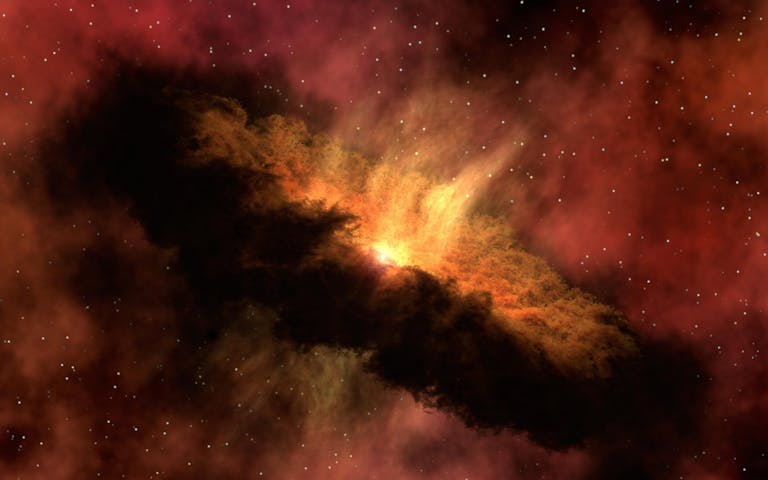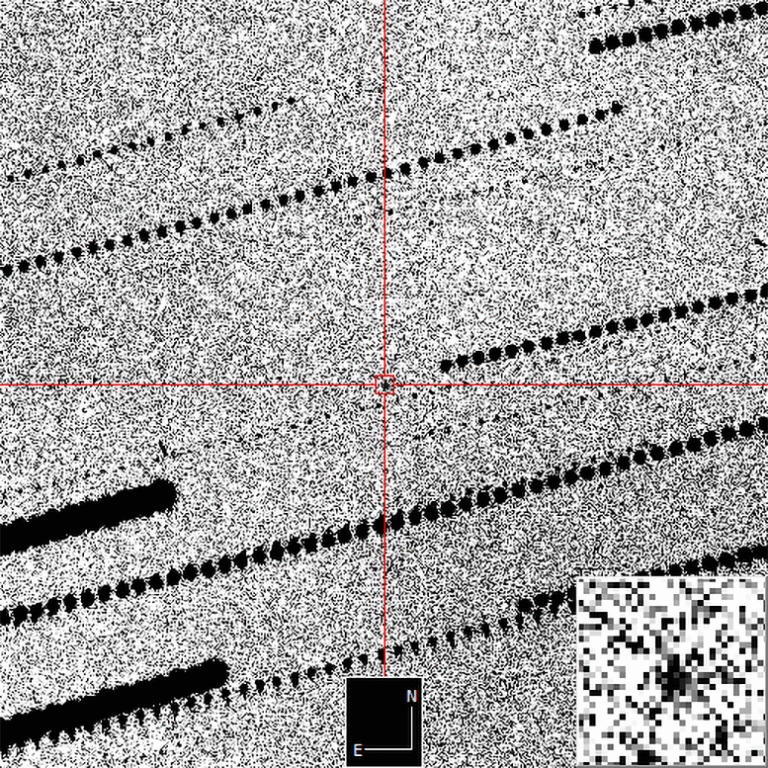James Webb Telescope Reveals Auroras, Clouds, and Extreme Weather on Rogue Planet SIMP-0136

Astronomers using the James Webb Space Telescope (JWST) have uncovered a remarkable set of atmospheric features on a nearby rogue planet known as SIMP-0136. This isolated world, about 20 light-years away in the constellation Pisces, is not bound to any star yet displays dazzling auroras, swirling storms, and exotic cloud formations. The findings represent some of the most detailed measurements ever made of an atmosphere beyond our solar system.
What Exactly Is SIMP-0136?
SIMP-0136 is classified as a T2.5-type brown dwarf. Brown dwarfs occupy a unique middle ground between stars and planets. They are too small to sustain the nuclear fusion that powers stars like our Sun, but they are often larger and more massive than gas giant planets such as Jupiter.
Key details about SIMP-0136 include:
- Mass: Approximately 15 ± 3 times the mass of Jupiter.
- Radius: About 1.2 times larger than Jupiter.
- Age: Around 200 ± 50 million years, which makes it relatively young in cosmic terms.
- Rotation period: A rapid spin of just 2.4 hours, much faster than Jupiter’s ~10-hour day.
- Temperature: Around 1,500 °C (~1770 K), with small variations recorded across its surface.
Because SIMP-0136 is not orbiting a star, it is sometimes referred to as a rogue planet, although technically it is a brown dwarf. These kinds of objects are excellent analogs for studying exoplanets because they can be observed directly without the overwhelming glare of a host star.
What Did JWST Observe?
The JWST observations focused on time-resolved spectroscopy, essentially watching how SIMP-0136’s light changed as it rotated. Researchers used two JWST instruments:
- NIRSpec/PRISM, which covers a broad near-infrared wavelength range.
- MIRI/LRS, which probes the mid-infrared.
By observing a full rotation of the planet, astronomers could track subtle brightness and color variations. These variations reveal changes in temperature, chemical composition, and cloud coverage across its surface and atmosphere.
The data revealed several surprises:
- Auroras: Bright, shimmering aurora-like displays were detected, similar to Earth’s Northern Lights but on a much more powerful scale.
- Thermal inversion: The upper atmosphere showed a temperature increase with altitude—a thermal inversion of about 250 K above the 10 mbar pressure level.
- Cloud stability: Rather than dynamic patchiness, the cloud cover remained nearly constant across its surface.
- Temperature shifts: The team measured temperature fluctuations smaller than 5 °C, which is extraordinary precision for an object nearly 20 light-years away.
- Chemistry changes: Variability was strongly tied to changes in the amounts of carbon dioxide (CO₂) and hydrogen sulfide (H₂S) in the atmosphere.
Why Are the Auroras Important?
Auroras are caused by charged particles interacting with a magnetic field and atmospheric gases. On Earth, these particles come from the solar wind. But SIMP-0136 is a free-floating object with no nearby star to provide a solar wind.
So, how does it sustain such strong auroras?
- Astronomers suggest that internal processes inside the planet, coupled with its strong magnetic field, accelerate particles that then collide with the atmosphere.
- Past radio observations already hinted that SIMP-0136 had auroral activity, and the JWST results confirm that these auroras are also tied to heating the upper atmosphere.
This is particularly significant because it means auroras on SIMP-0136 are not just pretty lights—they actually alter the atmospheric structure by depositing energy into the upper layers.
What About the Clouds?
Unlike Earth’s water-based clouds, the clouds on SIMP-0136 are made of silicate grains—essentially tiny sand-like particles. At temperatures of over 1,500 °C, silicates remain suspended as clouds rather than forming solid surfaces.
One of the unexpected findings was that the cloud coverage did not vary much as the planet rotated. Researchers expected patchy clouds or large variations, but instead, the silicate clouds were remarkably uniform.
Even though cloud patterns stayed stable, the data still required patchy cloud models to fit observations. This suggests that small-scale patchiness exists, but large-scale differences across the globe are minimal.
Temperature and Atmospheric Dynamics
The atmosphere of SIMP-0136 is far from static. Researchers found:
- Effective temperature variations between 1243 K and 1248 K across different rotation phases.
- A strong correlation between temperature fluctuations and changes in CO₂ and H₂S abundances.
- Variability was dominated by temperature profile changes in the deeper atmosphere, not by cloud dynamics.
In simpler terms, what we see as the planet rotates is not so much clouds drifting around, but temperature-driven chemical differences coming in and out of view.
The Bigger Picture: Why This Matters
This study marks the first time that direct changes in atmospheric properties have been measured on a free-floating world. For planetary scientists, this is groundbreaking. Here’s why:
- New way to study exoplanet weather: By applying advanced retrieval models to JWST data, astronomers can now measure temperature and chemistry changes on rotating worlds.
- Auroral heating as a driver: The discovery that auroras can cause major heating suggests new interactions between magnetic fields, atmospheres, and energy transport.
- Benchmark for future work: SIMP-0136, being nearby and relatively bright in infrared, serves as a template for studying other exoplanets in more detail later.
Future telescopes like the Extremely Large Telescope and the Habitable Worlds Observatory may expand these methods to giant exoplanets orbiting stars, and eventually to rocky planets that resemble Earth.
Other Studies on SIMP-0136
This isn’t the first time SIMP-0136 has been under the spotlight.
- Earlier work led by Allison McCarthy (Boston University) also detected variability but could not fully explain its origin. That study suggested patchy clouds, auroras, and chemistry all played roles.
- More recently, JWST’s NIRISS instrument was used to map atmospheric features. That analysis showed that about 81% of its variability can be explained by two dominant components, hinting at at least three distinct atmospheric regions. Researchers also found north-south asymmetry and multiple cloud decks (for example, thick iron clouds below patchy forsterite clouds).
Together, these results paint a picture of a world that is far more complex than scientists initially imagined.
Rogue Planets: A Quick Primer
Since SIMP-0136 is often referred to as a rogue planet, it’s worth pausing to understand what these objects are.
- A rogue planet is a planetary-mass object that does not orbit a star. Instead, it drifts freely through space.
- They may have formed around stars and later been ejected due to gravitational interactions, or they may have formed independently like small stars.
- Some estimates suggest there could be billions of rogue planets in the Milky Way.
- Because they are not heated by starlight, their atmospheres are shaped by internal heat and magnetic activity—just like we see with SIMP-0136.
Studying rogue planets is valuable because they allow astronomers to separate atmospheric processes from stellar effects. In other words, we can learn about intrinsic planetary physics without the complications of a nearby star.
Brown Dwarfs: Between Stars and Planets
Brown dwarfs like SIMP-0136 deserve their own mention.
- They are often called failed stars, as they do not sustain long-term hydrogen fusion.
- Their masses range from about 13 to 80 Jupiter masses. Objects above ~13 Jupiter masses can fuse deuterium for a short time, but they still fall short of being stars.
- Brown dwarfs are categorized into spectral types (M, L, T, and Y), with T dwarfs like SIMP-0136 being cooler and showing strong methane and water absorption in their spectra.
- They often have fast rotation, strong magnetic fields, and dynamic atmospheres, making them excellent testbeds for exoplanet science.
Why SIMP-0136 Is Special
What makes SIMP-0136 particularly exciting is that it brings all these features together:
- It’s close enough (20 light-years) to study in detail.
- It’s young and still hot, glowing strongly in the infrared.
- It rotates quickly, so we can observe how its atmosphere changes within hours.
- It has both stable silicate clouds and active auroras, offering a chance to study interactions between magnetic and atmospheric processes.
Conclusion
The James Webb Space Telescope has given us a front-row seat to the weather on a rogue planet. SIMP-0136 is a world with blazing auroras, stable yet exotic silicate clouds, rapid rotation, and subtle chemical shifts that play out in real time. These results highlight how powerful JWST has become as a tool for understanding not just distant stars and galaxies, but also the complex and dynamic atmospheres of nearby planetary-mass objects.
The discovery underscores a broader message: even worlds drifting alone in interstellar space can have vibrant, stormy, and dynamic environments. Far from being dead or dull, they may hold the keys to understanding the atmospheric processes shaping exoplanets across the galaxy.





